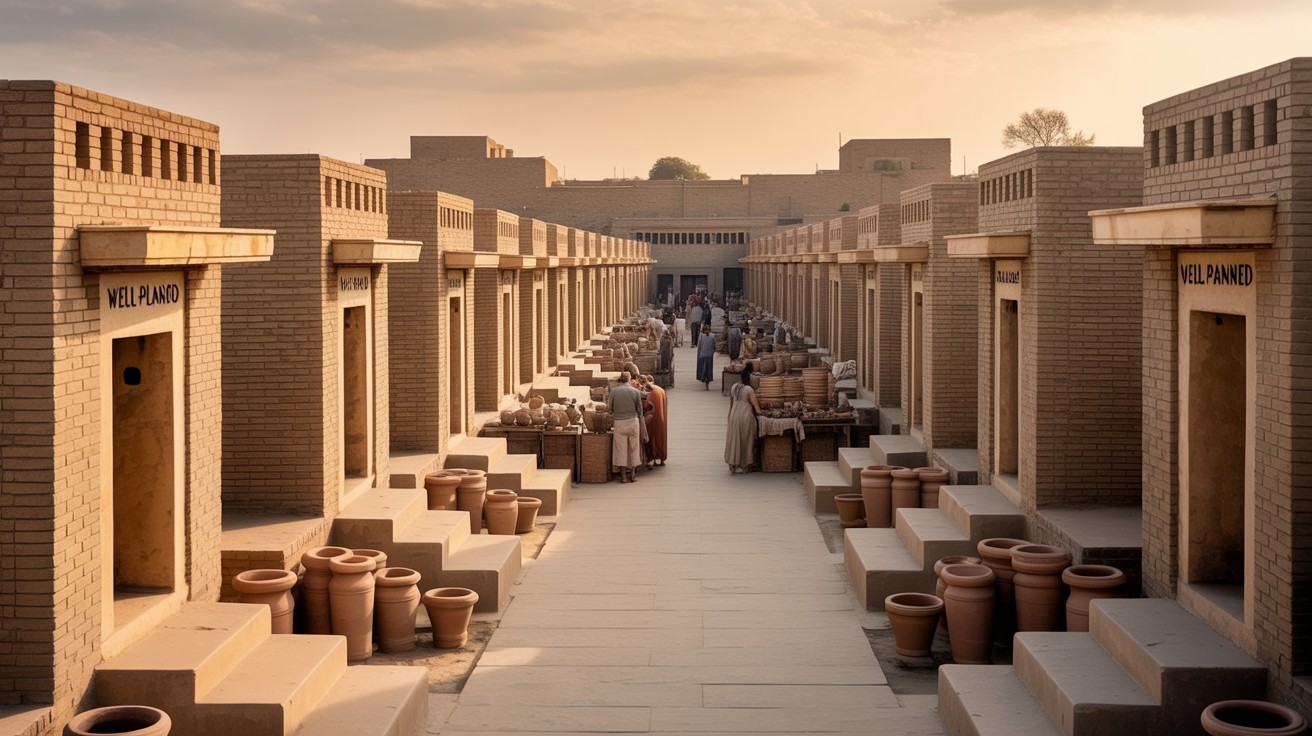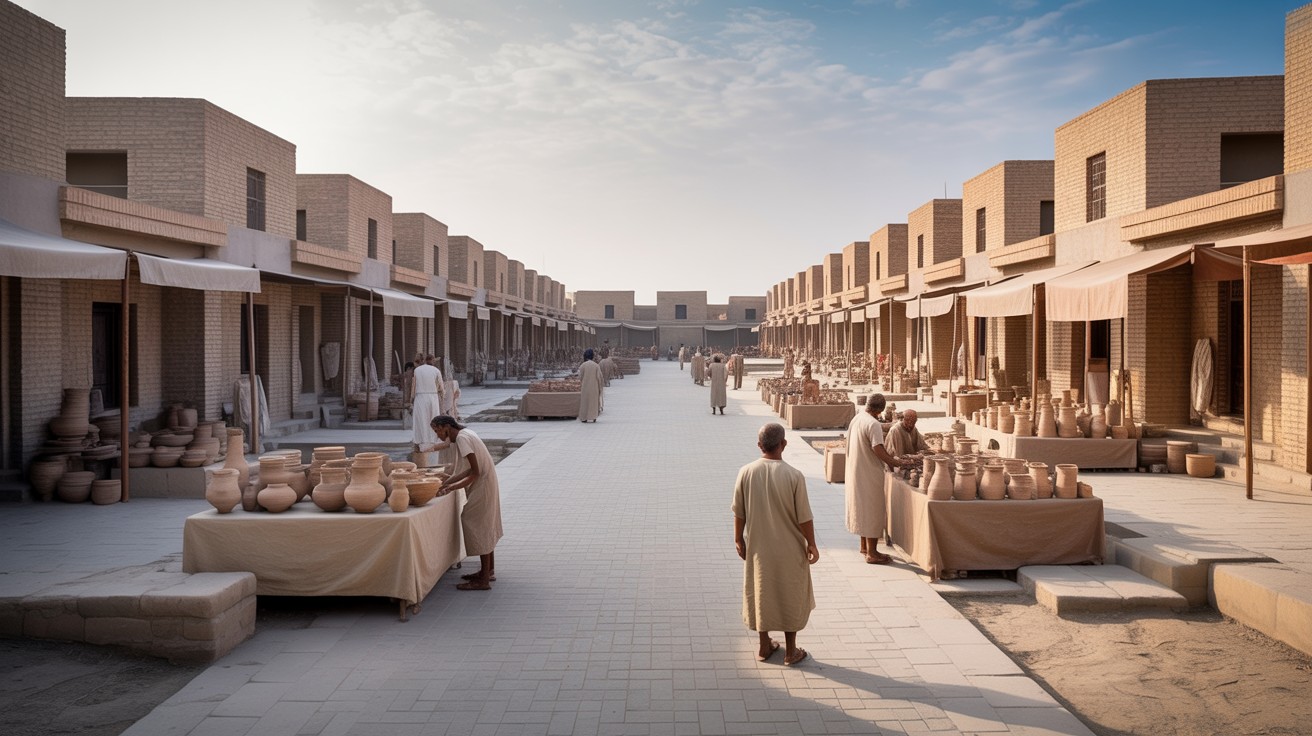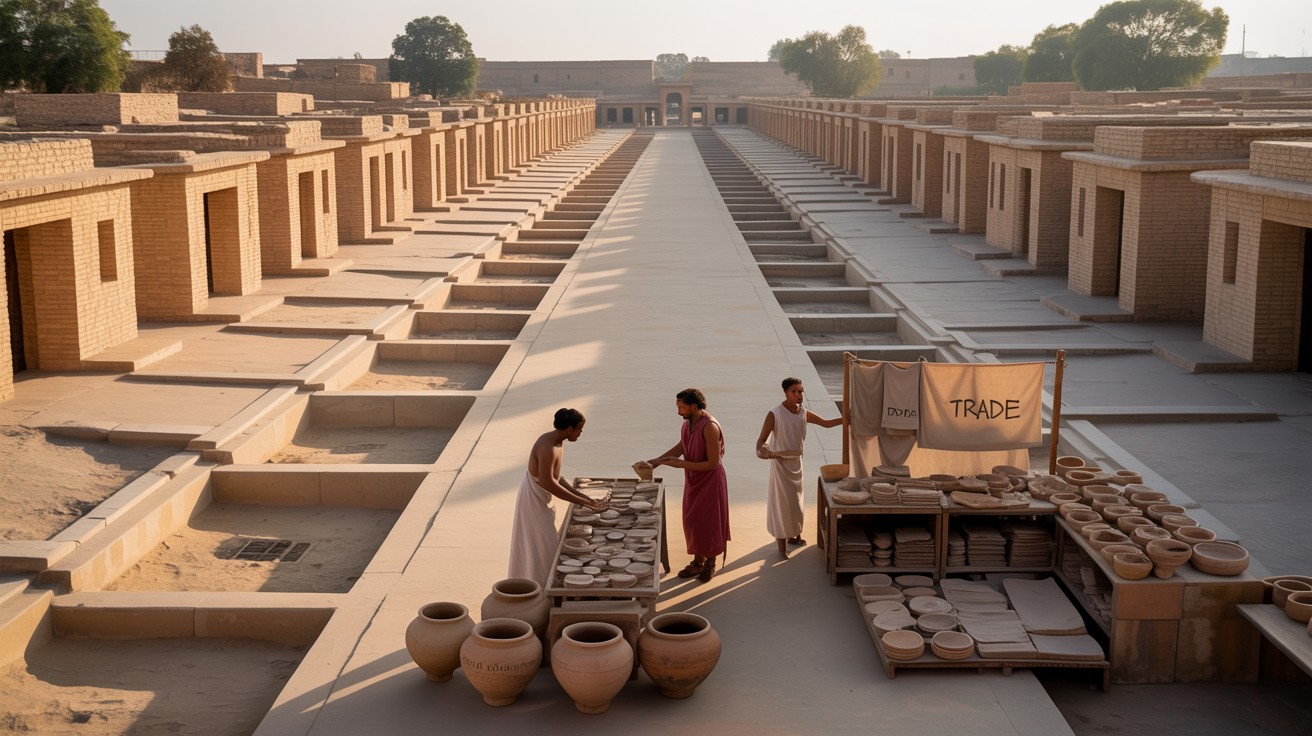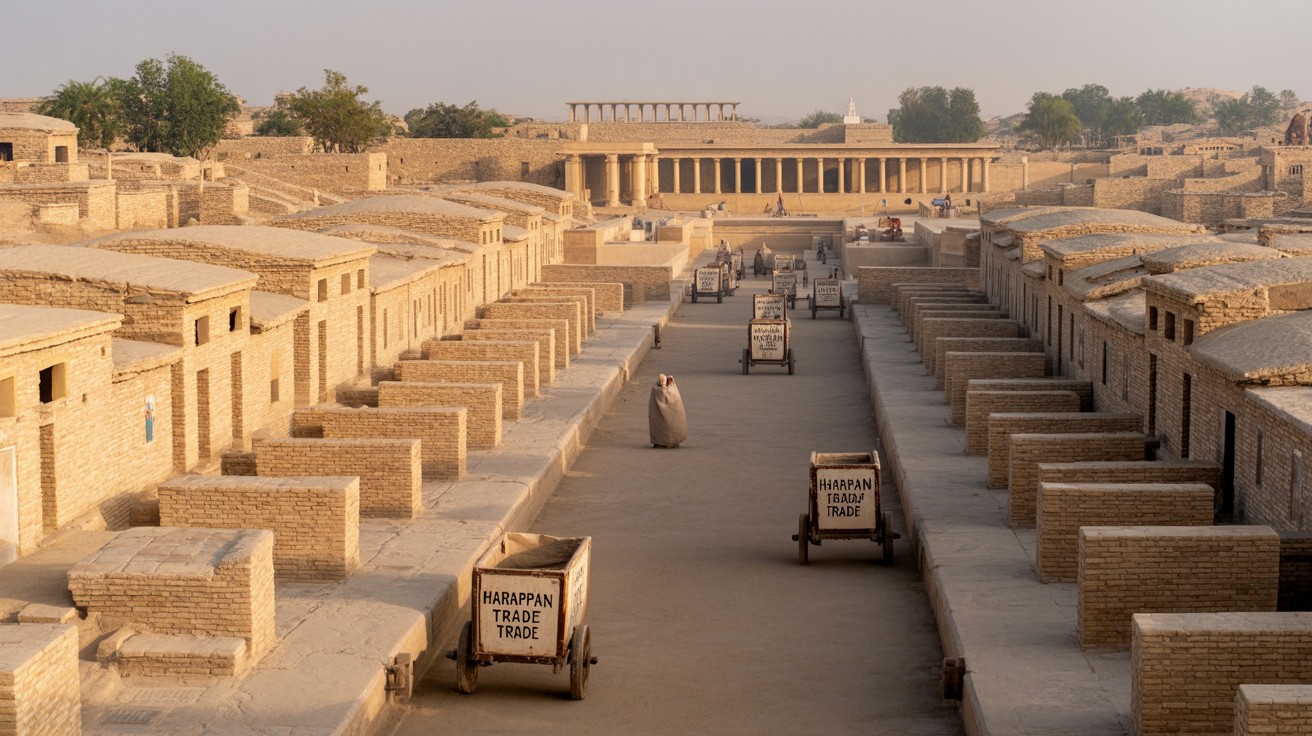Indus Valley Civilization
Discover one of the world's earliest urban civilizations, known for its advanced city planning, sophisticated drainage systems, and mysterious undeciphered script. Explore the Bronze Age marvels that flourished along the Indus River.
The Cradle of Urban Civilization
The Indus Valley Civilization, also known as the Harappan Civilization, was one of the world's earliest urban civilizations, flourishing from 3300 to 1300 BCE along the Indus River in present-day Pakistan and northwest India. This remarkable civilization was characterized by its advanced city planning, sophisticated drainage systems, standardized weights and measures, and a mysterious script that remains undeciphered to this day.
Planned Cities
World's first grid-based urban planning
Sanitation Systems
Advanced drainage and water management
Undeciphered Script
Mysterious writing system still unsolved
Standardized Weights
Uniform measurement systems
Indus Valley Heritage
Explore seamless collage of Indus Valley heritage — from the grid-like streets of Mohenjo-Daro and intricate seals with mysterious script, to bustling market scenes and artisans crafting pottery, flowing into timeless depictions of river trade along the Indus. The imagery is woven together in earthy terracotta tones, deep river blues, and accents of bronze, reflecting both the natural landscape and cultural sophistication of the civilization.
The Indus Valley civilisation thrived in harmony with its rivers, building some of the world’s earliest planned cities. Streets were laid out in precise grids, drainage systems revealed advanced urban engineering, and houses stood as testaments to a society deeply invested in order and community. These achievements marked a culture that valued structure, cleanliness, and collective well-being.
Spirituality and symbolism were ever-present in daily life. Seals bearing mysterious animals and divine motifs suggest a pantheon of deities tied to fertility, water, and protection. Ritual baths and sacred spaces reflect the importance of purity and renewal, hinting at traditions that may have influenced later religious practices across South Asia.
Art and craftsmanship flourished across the valley, with artisans producing exquisite beadwork, ceramics, and bronze figurines. These creations were not merely decorative but carried cultural and spiritual significance, connecting households to larger traditions of beauty and identity. Through these objects, the voices of ancient makers still echo across time.
Commerce and trade extended far beyond the valley, linking communities to Mesopotamia, Central Asia, and beyond. River routes carried cotton, gems, and pottery, weaving the Indus into a vast network of cultural and economic exchange. This outward-looking spirit positioned the civilisation as a key node in the ancient world’s interconnected landscape.
Community life revolved around shared values of cooperation and equality. Unlike many contemporary cultures, evidence suggests fewer signs of rigid hierarchy, with emphasis on civic harmony rather than monumental palaces or royal tombs. This balance highlights a vision of society where collective welfare outweighed the dominance of a single ruler.
Today, the legacy of the Indus Valley endures in fragments — undeciphered scripts, ruins of great cities, and traditions of craft and agriculture that live on in South Asia. Though much remains a mystery, its influence continues to inspire, reminding us of a civilisation that mastered both innovation and harmony in one of humanity’s earliest urban experiments.
What mystery from the ancient world would you solve first?
Indus Valley Sites
Explore the three major archaeological sites that reveal the sophistication and achievements of the Indus Valley Civilization.
Harappan Civilization
A Bronze Age marvel known for planned cities, drainage systems, and undeciphered script. The Harappan civilization was one of the world's first urban civilizations, featuring sophisticated city planning, advanced metallurgy, and a complex trade network that extended across the ancient world.

Mohenjo-Daro
One of the world's earliest major cities with advanced architecture and sanitation. Mohenjo-Daro, meaning "Mound of the Dead," was a thriving metropolis with sophisticated urban planning, including the world's first known urban sanitation system and advanced architectural techniques.

Rakhigarhi
A key archaeological site shedding light on the early phases of the Harappan culture. Rakhigarhi is one of the largest Harappan sites, providing crucial insights into the early development of the civilization and its transition from rural to urban life.

Indus Valley History
A comprehensive journey through the evolution of the Indus Valley Civilization, from ancient foundations to urban greatness.
3300-2600 BCE: Early Harappan Period
The Early Harappan period marked the formative phase of the Indus Valley Civilization, characterized by the development of early urban settlements and the establishment of basic city planning principles. During this time, communities began to organize themselves into larger settlements, developing the foundations of what would become one of the world's most sophisticated urban civilizations. The period saw the emergence of standardized pottery, early trade networks, and the initial development of the mysterious Indus script.





2600-1900 BCE: Mature Harappan Period
The Mature Harappan period represented the peak of the Indus Valley Civilization, featuring major cities like Mohenjo-Daro and Harappa with advanced urban planning and extensive trade networks. This era saw the development of sophisticated drainage systems, standardized weights and measures, and the creation of magnificent public buildings. The civilization reached its zenith with planned cities featuring grid-based street layouts, advanced sanitation systems, and impressive architectural achievements that rivaled those of contemporary civilizations.



1900-1300 BCE: Late Harappan Period
The Late Harappan period marked the decline phase of the Indus Valley Civilization, characterized by smaller settlements and the gradual abandonment of major urban centers. During this time, the sophisticated urban planning and drainage systems began to deteriorate, and the civilization transitioned to smaller, more localized communities. Despite the decline, this period still maintained many cultural traditions and continued to influence the development of subsequent civilizations in the region.




Indus Valley Timeline
The development and decline of the Indus Valley Civilization
Indus Valley Legacy
The foundations of urban civilization
Power of Indus Valley Culture
Transform Ancient Wonders into Modern Masterpieces
Instant Video Creation
Transform Indus Valley artifacts into stunning videos instantly! From Mohenjo-daro to Harappan seals, create cinematic masterpieces in seconds. Our AI brings ancient Indus Valley to life with motion graphics, transitions, and atmospheric effects.
Digital Archives
Access the world's largest collection of Indus Valley cultural assets! From high-resolution Mohenjo-daro photography to detailed artifact imagery, build your personal archive of ancient wonders. Download, organize, and use thousands of authentic Indus Valley images.
Cultural Remixes
Remix Indus Valley art like never before! Combine Harappan motifs with modern design, merge traditional architecture with contemporary styles, or create surreal mashups of ancient cities with futuristic elements. Your creativity is the only limit!
Ready to Create Indus Valley Magic?
Join thousands of creators who are already transforming ancient Indus Valley into modern masterpieces!
Explore Indus Valley Visuals
Discover thousands of high-quality images from the Indus Valley Civilization and transform them with AI effects.
Start Exploring